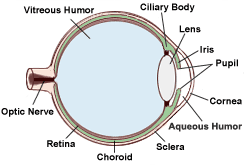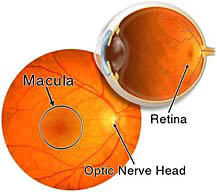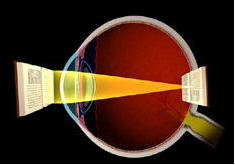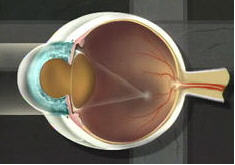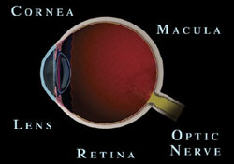- Retina Research Foundation
- About RRF
- Pilot Study Grants
- Grant Recipients 2025
- Samuel M. Wu, PhD
- Yingbin Fu, PhD
- Graeme Mardon, PhD
- Wei Li, PhD
- Yuqing Huo, MD, PhD
- Rui Chen, PhD
- Wenbo Zhang, PhD
- Curtis Brandt, PhD
- Lih Kuo, PhD
- Timothy Corson, PhD
- Jianhai Du, PhD
- Francesco Giorgianni, PhD
- James Monaghan, PhD
- Seongjin Seo, PhD
- Andrius Kazlauskas, PhD
- Erika D. Eggers, PhD
- Ann C. Morris, PhD
- Ming Zhang, MD, PhD
- Christine Sorenson, PhD
- Alex J. Smith, PhD
- Jeffrey M. Gross, PhD
- David M. Wu, MD, PhD
- Kinga Bujakowska, PhD
- Eric Weh, PhD
- Ching-Kang Jason Chen, PhD
- Jakub K. Famulski, PhD
- Thanh Hoang, PhD
- Georgia Zarkada, MD, PhD
- Eleftherios Paschalis Ilios, PhD
- Oleg Alekseev, MD, PhD
- Erika Tatiana Camacho, PhD
- Patricia R. Taylor, PhD
- Elizabeth Vargis, PhD
- Publications
- Grant Guidelines and Information
- Grant Application
- Grant Recipients 2025
- Research Programs
- Contact Us
- Giving
- RRF History
- Home
The Retina
Our eyes are windows to the soul. They enchant us with the power of wordless speech.
Our eyes are tools of the brain, designed to gather, guide and filter light for ultimate conversion into the brain's own language.
Whereas most animals rely on hearing and smell, we put our trust in sight for our survival and quality of life. It is no wonder, then, that loss of vision is such a dreaded event, the most feared of all disabilities.
Why Retina Research?
Eyes are for seeing, expressing the emotions and much more. When they open, the central nervous system and the circulatory system are exposed. This happens nowhere else in the body.
That is why scientists have the greatest interest in learning how the retina functions. Basic knowledge of the retina is yielding clues to many systemic diseases such as Alzheimer's disease and arteriosclerosis.
It should be no surprise, therefore, to learn that scientists consider the eye as the laboratory of the body with the retina as its workbench.
All components of the eye are designed to support and focus light on the retina with its millions of photoreceptors and nerve fibers lining the back wall of the eye.
Everything in the eye develops from three basic layers of tissue: the sclera, an inflexible white tunic that encases the eyeball; the choroid, the eye's blood supply; and the retina.
Shown below (top) is a diagrammatic sketch of the eye, with its various parts, and (bottom) a colored photograph of the retina. The large pale circle is the optic disc where arteries and veins enter the retina. The darker red area is the macula, used for seeing color and detail.
Diseases and Common Problems of the EYE
Normal Vision
Cataracts
The natural lens of the eye becomes cloudy, producing blurred vision and fading of colors.
Macular Degeneration
Most patients with this disease retain peripheral vision but lose the ability to see fine detail. The most common form of this disorder is "dry" macular degeneration, which remains very difficult to treat. Major advances in the treatment for "wet" macular degeneration have occurred over the last decade.
Glaucoma
Damage to the optic nerve caused by increased fluid pressure within the eye. Initial symptoms are loss of side vision with occasional pain and halos around lights.
Floaters
Visible clumps of material within the vitreous which appear to move with eye movement. In most cases these are harmless – but occasionally they are associated with impending retinal detachment.
Retinal Detachment
In retinal detachment, a black curtain obscures part of the field of vision corresponding to the portion of the retina that is detached. This is an emergency that often requires immediate surgery.
Retinitis Pigmentosa (RP)
Retinitis pigmentosa (RP) is the name for a group of inherited disorders involving deterioration of the retinal photoreceptors. The disease begins in childhood with night blindness, progressing to very limited tunnel vision in adulthood or even complete blindness.
Diabetic Retinopathy
Diabetic blindness occurs in two forms: background retinopathy (or nonproliferative retinopathy) caused by a breakdown in tiny blood vessels that nourish the retina, and proliferative retinopathy, in which new blood vessels form and grow out the retina toward the center of the eye. The longer a person has diabetes, the greater the risk of developing this tragic complication.
Ocular Cancers
Melanoma, one of the most aggressive skin cancers, can occur in the choroid behind the retina. Retinoblastoma, the most common eye cancer of childhood, can be inherited or can arise spontaneously. In the inherited form, the patient is predisposed to develop other cancers later in life.

